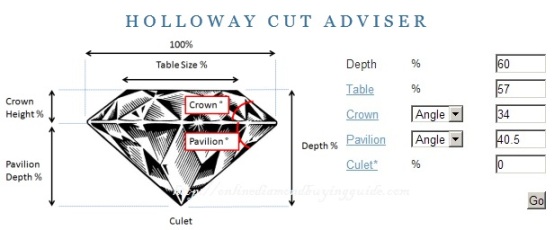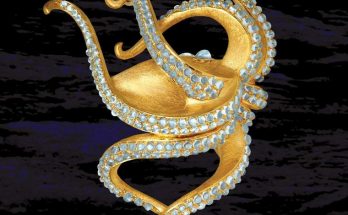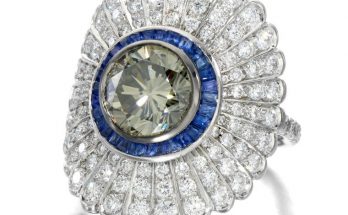If you had performed a little research about buying engagement rings, you probably have heard about a myriad of technical terms and jargon. The “four C’s”, table and depth %s, proportions, shapes and certificates probably things you might already have came across.
However, most of us cannot do anything meaningful with these data apart from comparing them to tables of “recommended proportions”. Fortunately, there is a simple system developed by Garry Holloway that can help you gleam deeper into a round diamond’s proportions.
The Holloway Cut Advisor, or as it is most commonly known, the “HCA” simplifies the process of judging the potential quality and appeal of a standard round brilliant cut. Let us take a look at how it works and why it could be a handy tool especially if you intend to purchase an engagement ring “blind”.
A Brief History of the Holloway Cut Advisor
The founder of HCA, Garry Holloway, is not a newcomer to the business and had joined in the industry since the early ’70s. Besides being a partner with one of the largest jewelry forum, he is also actively involved in diamond cut and research development with scientists from Russia and India.
After an intense study of how the various diamond proportions and angles interact with each other, he developed the HCA software. This program enabled the layman to key in variables found in the grading report and makes an instant prediction on the diamond’s visual appeal and performance.
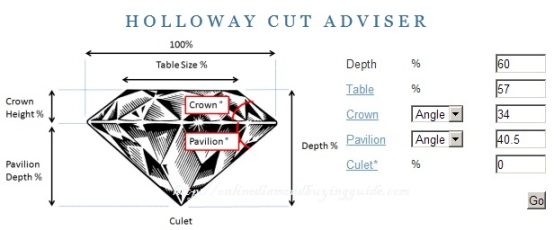
The free simulation software can be found here => Holloway Cut Adviser
Upon entering data into the HCA software, it will return a score ranging from 0 to 10 (a numerical figure below 2.0 is desired).
0-2 Excellent
2-4 Very Good
4-6 Good
6-8 Fair
8-10 Poor
An Overview of the Software’s Strengths
The HCA provides an assessment of a diamond’s potential light return, scintillation, spread and fire. It attempts to assess features that are closer to the actual visual appearance of a diamond and the grade is determined based on 4 factors:
Light Return
Fire
Scintillation
Spread
Combined, these 4 factors result in the Total Visual Performance of a diamond. A HCA score of less than 2 denotes a diamond that has desirable qualities and reflects light in an optimal way.
Note: The Holloway Cut Advisor will never replace a physical appraisal carried out by experts or the data an ASET/Idealscope provides, but it can definitely be considered a great helping tool you can use on your own, for free.
Using the HCA as a Rejection Tool
Here’s an example of how you can use it to weed out seemingly similar looking stones based on grading certifications. For comparison’s sake, I chose 2 round diamonds from James Allen which are graded by GIA as Excellent cuts and plugged their cut proportions into the tool.
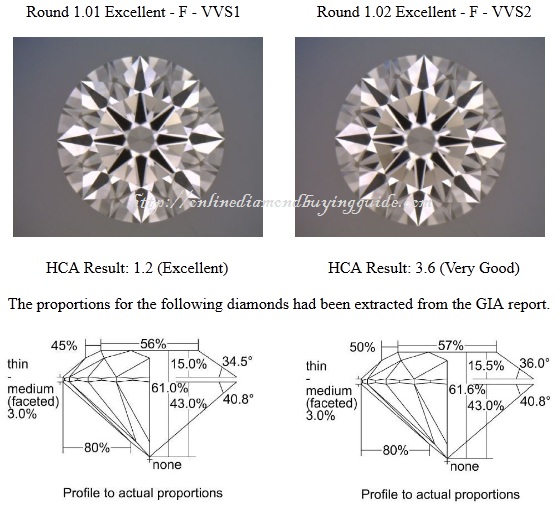
I would instantly reject the diamond on the right based on the HCA findings.
How to Use the Holloway Cut Advisor Tool
As you can see, the HCA tool is a very fast and handy tool to help you weed out stones that fall short of having great optics. In order to confirm your findings, you should also view the idealscope data to find out more details.
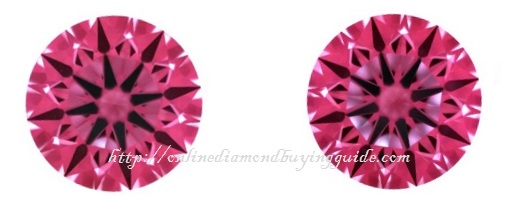
The diamond on the left shows a good performing round brilliant diamond under the Idealscope and this corresponds to the 1.2 HCA score that was received by the diamond. On the right, the image exhibits a leaky stone with light loss through the table facet as shown by the pale ring.
Even the Software Has its Weaknesses – What You Need Know
On a first glance, the HCA tool might appear to be the cleverest application created for the diamond shopper. However, it doesn’t always give an accurate result due to a variety of factors. The first reason behind having discrepancies is that the HCA tool only utilizes the measurements of 17 out of a total of 57 facets for its analysis.
To put things into perspective, the HCA score will not reveal whether the scintillation pattern of the stone has a pin fire or a broader flash characteristic. Besides relying on averaged readings, the HCA tool fails to take into account the girdle thickness variations, polish and symmetry ratings. Combine as a whole, these factors form a complex relationship which are all part and parcel of delivering light performance.
The next shortfall of the HCA is that it is only applicable for round brilliant cut diamonds. Fancy shapes or modified round cuts cannot be subjected to an analysis because the algorithm doesn’t work for them.
There are a lot of other factors that can influence the appeal and the value of a diamond. For example, a diamond’s HCA score will not reflect potential problems caused by a low clarity grade. Issues that may cause the stone to take up a hazy appearance or have adverse impacts on brilliance cannot be predicted by a computer algorithm.
Conclusion About the Usage And Results of the HCA
Taking everything into account, we can say that a HCA score is very useful to a certain degree. The tool provides quick and dirty results by taking into account the character of the input but you should not expect wonders. Diamonds cannot be judged beautiful or “ugly” by adding and subtracting numbers.
The Holloway Cut Advisor is not meant as a tool for selection but rather, a tool to reject poorly proportioned stones. Once you had weeded out the poor performers which score more than 2.0 on the HCA, you should apply other optical examination tools like the ASET or Idealscope in your final selection process. This will help you cherry pick the most brilliant stone from the remainder of diamonds with a HCA score of less than 2.0.
On this note, where are the best places to get your diamonds where you can get access to ASET/Idealscope tools? Continue reading to find out more…
<<
>>
